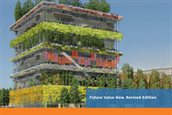Re-inventing Multi-functionality
Overland roads were few and far between at that time (1815); inland waterways accommodated most of the transport by far. As roads had to be located high and dry in the swampy Frisian land, they traditionally ran on top of dykes. These were the first roads to be paved and hence the Frisian language has but a single word to designate both dykes and roads: dyk. (Trouw, 16 April 2016, Tijd p. 28)
Linkage opportunities, demonstrating cost and benefit
The Dutch have been constructing roads on dykes for centuries, for example, in the Delta Works. Not only are the costs shared between the dyke manager and the road manager, but such roads also provide much better access to Zeeland. Constructing a road as a dyke is something we do less frequently, because it does not happen very often that a dyke is needed at a location where a road has been planned. Such an occasion presented itself a few years ago near Gouda: the dyke now costs 800,000 euros instead of 5 million euros; furthermore, it has improved access to the area.
Considering the plethora of policy objectives on the agenda, such as climate adaptation and healthy cities, this era calls for other types of projects. Linkage opportunities offer a way out. The book entitled Reinventing Multifunctionality (pdf, 4.6 MB) presents several dozens of examples: dykes that double as nature reserves, a road surface that stores heat and cold, green roofs, noise barriers with solar panels, assisted living centres, and many more.
Utilising linkage opportunities can both save money and yield better quality. Many opportunities do not make it, which in some cases is evident, but sometimes it is a downright shame. In order to help good linkage opportunities cross the threshold, this book explains the theory and practice of what linkage is and how it is done.
Download the book Reinventing Multifunctionality (pdf, 4.6 MB)

Download the book Reinventing Multifunctionality (png, 144 kB)